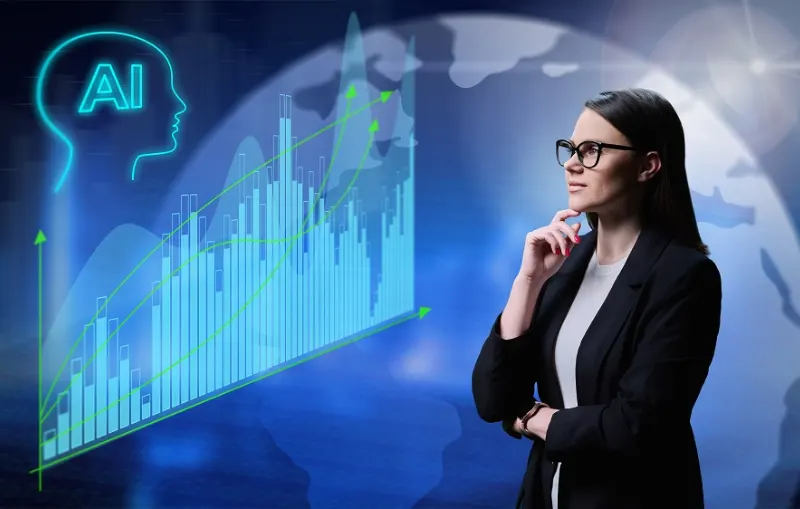As technology develops and artificial intelligence becomes more prominent, the role of transformational leadership has also evolved. These types of leaders focus on inspiring and motivating their teams to achieve higher levels of performance and creativity. The connection between transformational leadership and artificial intelligence, still, went mainly unexplored. In this blog, we’ll look at how these seemingly unrelated ideas can actually complement one another to yield even better effects. We’ll examine the advantages and difficulties of incorporating AI into transformational leadership techniques and offer recommendations on how businesses may make the most of this potent combination to boost their general effectiveness.
Transformational Leadership
Transformational leadership is a management approach that focuses on inspiring and motivating employees to achieve their full potential. Transformational leaders set high expectations and encourage their team members to be creative and innovative. They also provide support and guidance, and are often viewed as mentors or role models. The key characteristics of transformational leadership include charisma, intellectual stimulation, individualized consideration, and inspirational motivation. This leadership approach is often associated with improved organizational performance and employee satisfaction. Organizations that adopt transformational leadership can create a culture of continuous improvement and innovation.
Artificial Intelligence
AI, AKA Artificial Intelligence, can be defined as a new tool that describes the development of the latest technology that can simulate human intelligence, but in an improved way. Basically, the procedure of how AI works is to create hardware or software that can “think”, “read” and “learn” like humans, and have the ability to regenerate info to answer human needs. The aim is to reproduce in machines human-like skills including thinking, problem-solving, and decision-making. Self-driving cars, picture identification, and speech recognition are a few examples of AI applications. AI has a huge opportunity to completely reshape a wide range of industries, including finance and healthcare, Customer service, Food and Beverage, Logistics and Delivery, etc. Organizations have the chance to strengthen their competitive advantage and streamline their business processes as AI develops.
Synergy between AI & TL
Synergy between transformational leadership and AI can create a powerful combination that leads to improved organizational outcomes. First, AI can enhance transformational leadership by providing data-driven insights that inform decision-making. For example, AI algorithms can analyze large data sets to identify patterns and trends that a transformational leader can use to identify high-potential employees and design individualized development plans. AI can also help with recruiting and onboarding processes by automating tasks and providing a more personalized experience for candidates.
Then again, Transformational Leadership can upgrade Artificial intelligence execution by making a culture of nonstop improvement and development. Employees can be encouraged to think outside the box, try out new approaches, and take chances by a transformational leader. They can likewise offer help and direction to guarantee that representatives have the vital abilities and assets to work with AI.
At last, the collaboration between transformational leadership and Artificial Intelligence can prompt better powerful results by empowering quick variation to change and interruption. Organizations are able to make faster, more informed decisions and respond more effectively to changing circumstances by combining AI’s ability to analyze data in real time and generate insights with an approach to leadership that is forward-thinking and adaptive. In general, the synergy between transformational leadership and Artificial Intelligence, provides associations dynamic open opportunities to achieve their goals and grow in a rapidly changing corporate environment.
Potential Challenges
While the synergy between transformational leadership and AI presents many potential benefits, there are also some challenges that organizations may face when integrating the two. One potential challenge is resistance to change from employees who may be hesitant to embrace new technologies or leadership approaches. This resistance can be addressed through effective communication and training programs that help employees understand the benefits of AI and transformational leadership.
Another challenge is the risk of overreliance on AI, potentially resulting in a loss of critical thinking and decision-making skills among employees. To address this challenge, transformational leaders can encourage a balance between AI and human capabilities, emphasizing the importance of human creativity and innovation.
Data privacy is also a potential challenge when implementing AI, especially in industries that deal with sensitive information. Leaders can address this challenge by implementing strong data privacy and security protocols and ensuring that employees are trained to handle sensitive information appropriately.
AI judgment is another potential challenge that can negatively impact decision-making. To address this challenge, transformational leaders can ensure that AI algorithms are programmed with diverse datasets and that the results are regularly audited to ensure fairness and accuracy.
Overall, while integrating transformational leadership and AI presents potential challenges, these challenges can be effectively addressed with the right leadership and strategies in place.
Reference
MIT Technology Review. (2021, March 25). Transformative Leadership in the Age of AI. MIT Technology Review. https://www.technologyreview.com/2021/03/25/1043574/transformative-leadership-in-the-age-of-ai/
Author: Mr. Elie El Khoury



